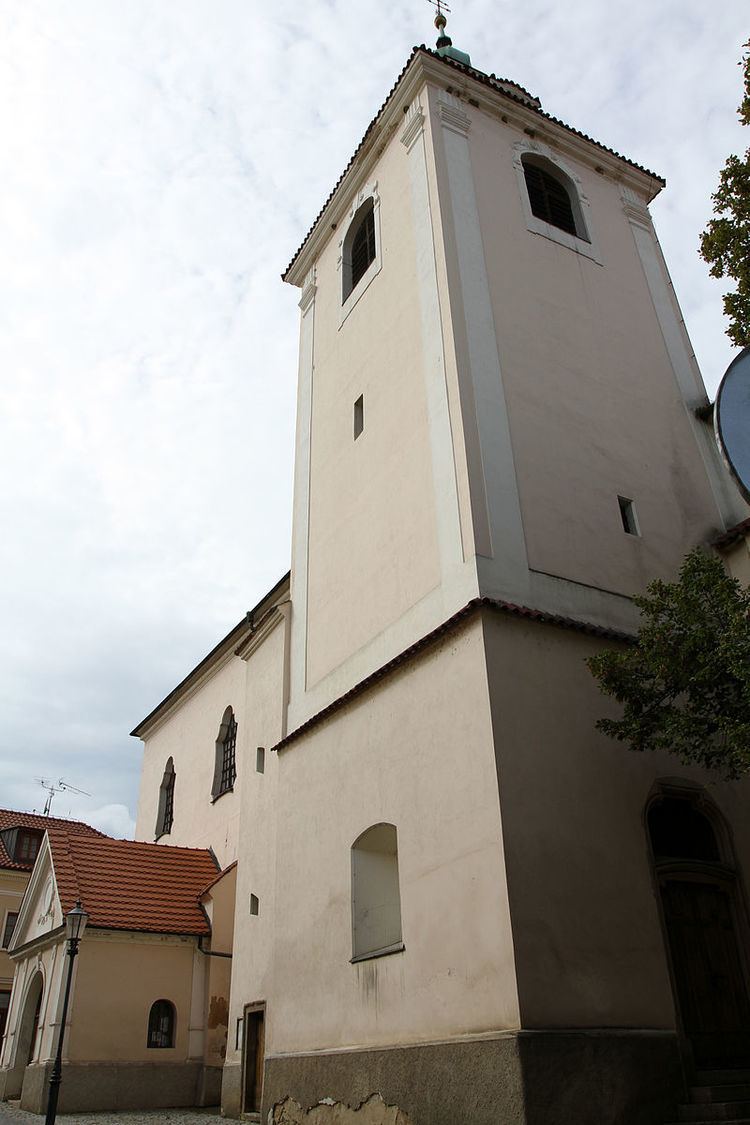 | ||
The Church of Saint James in Beroun is situated on the Western end of the Square of Jan Hus near the Pilsen Gate. The church is classified as a cultural heritage monument of the national level since 1958.
It was built in the thirteenth century and until the sixteenth century, it was surrounded by a cemetery. The church survived several fires and was pillaged by the Swedes before the Treaty of Westphalia was signed. In the seventeenth century, a bell tower was added to the church on its southern side. In the year 1680, a plague pillar was erected in front of the entrance, as 341 citizens of the city - one half of its population - were killed by the disease. Most of the interior decorations of the church date back to the eighteenth century, which is also the date when the paintings of Saint James and John of Nepomuk (1744) were created by J. P. Molitor. Another of the paintings was created by the school of Anthony van Dyck and depicts the cross of Jesus. Other relics include the tin baptistry (1606) by Matěj Flamínek, the carved pulpit by Josef Šnábl and the plaque of the married couple bearing the name "Henich" from the revolutionary year of 1848. In the year 2000, four church bells were made for the church by Josef Manoušek. Each of the bells were named after Czech saints; Václav, Vojtěch, Anežka and Ludmila. The financing came from sponsors and the citizens of the city themselves, who contributed to the fund-raising campaign. Four years later, the church was given a pipe organ from Beroun's partner city Rijswijk in the Netherlands.
